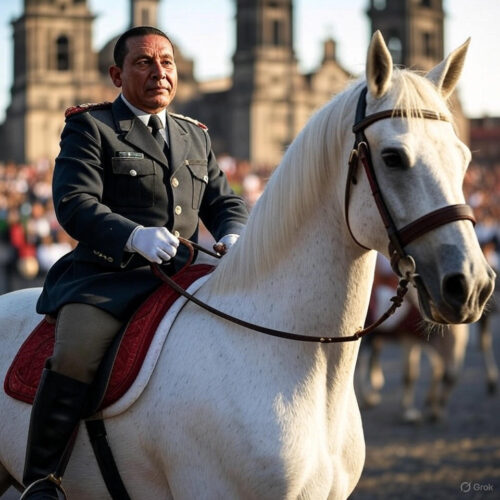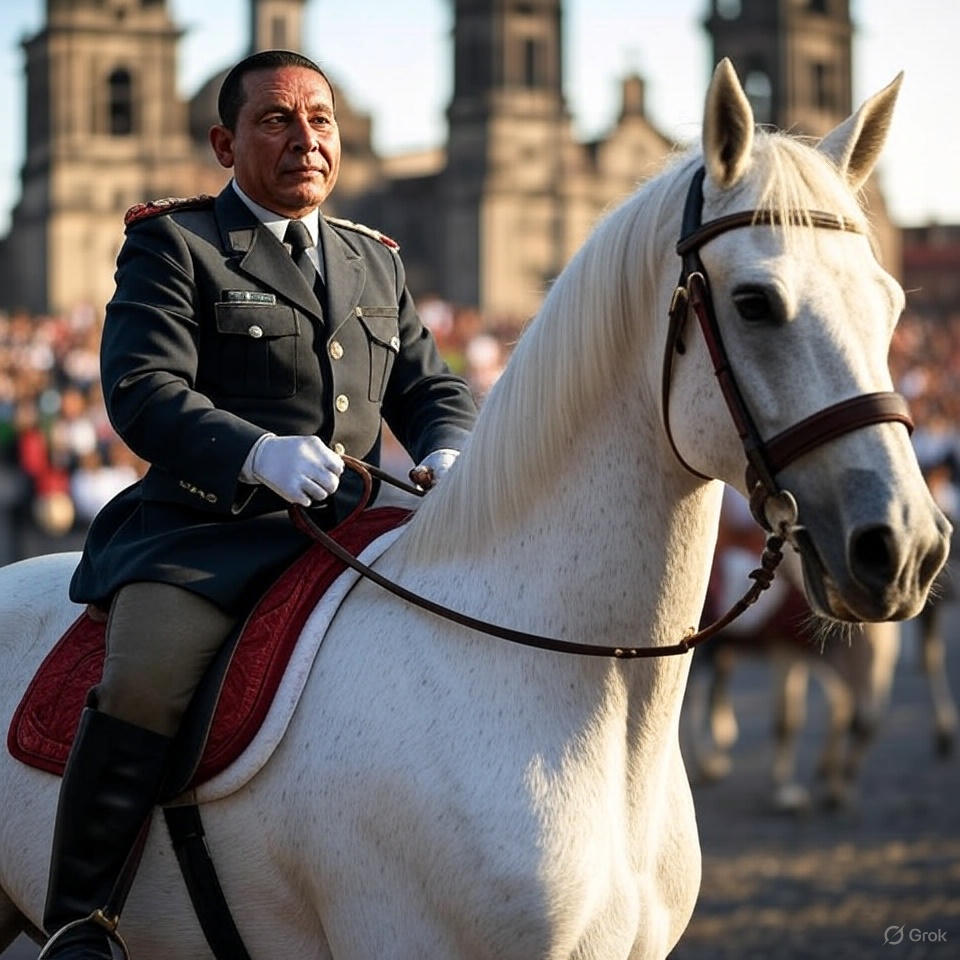Imagine a dusty dawn in 1821, the air thick with the scent of agave and gunpowder, as a ragtag army of creoles, mestizos, and indigenous warriors crests a hill overlooking the glittering spires of Mexico City. Their banners flutter like defiant wings—white for unity, green for independence, red for religion—a tricolor born not in a king’s salon but in the crucible of rebellion. On September 27, 1821, this Army of the Three Guarantees, a improbable alliance forged in the fires of betrayal and hope, marches into the heart of New Spain. The viceroy’s palace falls silent, Spanish flags are furled, and with a thunderous cheer that echoes from the volcanoes to the sea, Mexico is born. No trumpets from Europe, no divine right of kings—just the raw, roaring will of a people who dared to dream beyond chains.
This wasn’t just a footnote in some dusty ledger of empires crumbling; it was the climax of an 11-year odyssey that reshaped a continent. The Mexican War of Independence, sparked by a priest’s cry in the midnight shadows of Dolores Hidalgo, ended not with a whimper but with this triumphant stride into the Zócalo. It’s a tale of unlikely heroes, savage battles, and hairpin turns of fate that read like a novel by Gabriel García Márquez, if he’d traded magical realism for the gritty magic of human grit. And here’s the kicker: over two centuries later, on this very September 27, 2025, that spark hasn’t dimmed. It crackles in the air, whispering to you—yes, you—that the power to declare your own independence from whatever binds you isn’t locked in history books. It’s a blueprint for breaking free in your own life, one deliberate step at a time.
But let’s not rush to the inspiration just yet. History deserves its due, and this story is a feast of details that will transport you back to an era when every shadow hid a spy, every hacienda a hotbed of revolt, and every peal of church bells could signal doom or deliverance. We’ll wander the blood-soaked trails from Querétaro to the halls of Chapultepec, meet the men (and women) who turned plowshares into swords, and uncover the sly diplomatic dances that made the impossible inevitable. By the time we’re done, you’ll see why this day isn’t just Mexico’s—it’s a universal anthem for anyone who’s ever felt the itch to rewrite their story.
### The Powder Keg Ignites: Roots of Rebellion in New Spain
To understand September 27, 1821, we must rewind the clock to the sultry September night of 1810, when Father Miguel Hidalgo y Costilla, a bespectacled priest with a penchant for Enlightenment tomes and forbidden grapes (yes, he ran an illicit vineyard), rang the bells of his parish in Dolores. It was the Grito de Dolores, a primal howl against the Spanish crown’s stranglehold on New Spain—a vast viceroyalty stretching from the deserts of California to the jungles of Yucatán, richer in silver than in rights. Hidalgo, no firebrand revolutionary at first glance, had been radicalized by the French Revolution’s echoes and the brutal inequalities that pitted peninsulares (Spain-born elites) against creoles (American-born Spaniards), mestizos, indigenous folk, and enslaved Africans.
His call to arms? “Death to bad government! Death to the gachupines!”—the latter a slur for Spaniards, evoking the sound of their spurs jangling like chains. What started as a rally of 600 villagers swelled into a 80,000-strong horde by the time they sacked the silver mines of Guanajuato on September 28, 1810. Picture the chaos: miners wielding picks like lances, priests waving crucifixes amid the fray, and the Alhóndiga de Granaditas fortress crumbling under a siege led by an indigenous woman named María Mandujano, who legend says hurled the first stone. The battle was a slaughter—2,000 royalists dead, rivers running red with ore-tainted blood—but it lit the fuse.
Hidalgo’s army, a motley force of farmers in sarapes and escaped slaves on horseback, marched toward Mexico City. They were fueled by a heady mix of Catholic fervor (Hidalgo brandished the Virgin of Guadalupe as their banner) and egalitarian dreams. But discipline frayed; looters outnumbered liberators, and by October, at the Battle of Monte de las Cruces, Hidalgo hesitated. Victory was within grasp—royalists routed—but he pulled back, fearing the mob’s vengeance would devour the city. It was a fatal pause. Spanish forces regrouped under General Félix María Calleja, a steely veteran who turned the tide at the Bridge of Calderón on January 17, 1811. There, in a dust-choked valley near Guadalajara, Hidalgo’s 100,000 faced Calleja’s 7,000. Cannon fire turned the air to hellfire; a stray spark ignited Hidalgo’s own munitions wagons, and the insurgents fled in pandemonium. Hidalgo was captured weeks later, defrocked in a sham trial, and executed by firing squad on July 30, 1811, his head pickled and displayed on a spike in Guanajuato’s granary wall as a grisly warning.
Yet the flame didn’t gutter out. Enter José María Morelos y Pavón, Hidalgo’s acolyte, a mulatto priest with a soldier’s soul and a strategist’s mind. From his base in the southern sierra of Guerrero (named for his comrade Vicente Guerrero), Morelos refined the revolution into a disciplined machine. No more peasant hordes; his army was a guerrilla phantom, striking supply lines and haciendas with surgical precision. In 1813, he convened the Congress of Chilpancingo, where delegates—creoles rubbing shoulders with indigenous caciques—drafted the Solemn Act of Declaration of Independence. It was radical: abolition of slavery, equality before the law, even hints of land reform. Morelos, ever the tactician, captured key ports like Acapulco, choking Spain’s silver lifeline. But like Hidalgo, fortune soured. Betrayed by a creole turncoat, he was ambushed at Puruarán in November 1815, tried in a kangaroo court, and garroted on December 22. His last words? A defiant “If you are going to kill me, kill me like a soldier, not like a criminal.”
The independence movement teetered on the brink, reduced to pockets of resistance. Enter the wildcard: Agustín de Iturbide, a creole colonel who’d once hunted insurgents for the crown like foxes in a hunt. Born in 1783 to a wealthy Valladolid family, Iturbide was the epitome of New Spain’s fractured elite—loyal to Spain but seething at being passed over for promotion in favor of peninsulares. His mustache alone could command a room, but it was his ambition that made him dangerous. By 1820, Spain’s liberal revolution (the Cádiz Constitution) forced King Ferdinand VII to grant colonies a voice, but it also radicalized conservatives. Iturbide, smelling opportunity, defected.
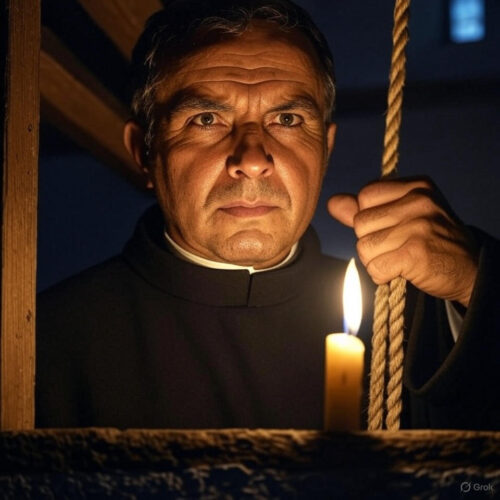
### The Unholy Alliance: Forging the Plan of Iguala
Iturbide’s pivot was audacious. In December 1820, he issued a broadside from Iguala, a dusty town in the silver-rich hills of Guerrero: the Plan of Iguala. It was a masterstroke of pragmatism, promising three guarantees—independence (from Spain), religion (Catholicism as the sole faith, no pesky Protestant whispers), and union (a constitutional monarchy uniting all classes under a European prince). No guillotines here; Iturbide envisioned a gentleman’s revolution, preserving the church’s lands and the elites’ privileges while ditching the Spanish yoke. To seal the deal, he reached across enemy lines to Vicente Guerrero, the indomitable guerrilla chieftain who’d kept Morelos’s flame alive in the sierras.
Guerrero was no creole dandy. Born around 1782 to Afro-Mexican parents in Tixtla, he was a tanned, sinewy fighter who’d evaded royalist dragoons since 1810, his band of 500 haunting the mountains like ghosts. Their meeting in February 1821 was pure theater: Iturbide, resplendent in his embroidered uniform, rides into a misty ravine; Guerrero, in buckskin and sombrero, emerges from the underbrush with rifle in hand. Skeptical at first—Iturbide had hunted him like prey—Guerrero grilled him over a campfire. “Prove your heart,” he demanded. Iturbide did, swearing on the Bible and outlining a vision where mestizos and indigenous folk wouldn’t just fight but rule. By dawn, they clasped hands, and the Army of the Three Guarantees was born.
Recruitment exploded. Priests blessed the tricolor flag (designed by Iturbide’s aide, Nicolás de Arteaga, with an eagle perched on a cactus devouring a serpent—ancient Aztec symbolism reborn). Indigenous communities, weary of tribute taxes, flocked to the cause; creole landowners, fearing radical land seizures, saw salvation in Iturbide’s conservatism. By March 1821, the army swelled to 4,000, drilling in the plazas of Valladolid (now Morelia). They weren’t supermen—dysentery felled as many as bullets—but their morale was ironclad, buoyed by Guerrero’s war cries and Iturbide’s silver-tongued proclamations.
The campaign kicked off with a bang. In Valladolid, royalist General Antonio de Santa Anna (yes, the future one-legged tyrant) defected after a bloodless standoff, his troops saluting the tricolor instead of firing on it. Iturbide pressed north, capturing the Bajío heartland—Baján, where Hidalgo had fallen—without a shot. By August, Querétaro trembled; its garrison, under Circus-master General Isidro Yáñez, surrendered after Iturbide’s artillery turned the convent of Santa Rosa into rubble. Yáñez, a pompous peacock of a man, signed the capitulation on a silver platter, his quill scratching surrender amid the scent of incense and cordite.
But Mexico City loomed, the crown jewel. Viceroy Juan de O’Donojú, a weary Irish exile dispatched from Madrid, arrived in July 1811—no, 1821—with orders to negotiate. Desperate to avoid all-out war, he met Iturbide at the Córdoba hacienda on August 24. Over chilled pulque and maps stained with wine, they hashed out the Treaty of Córdoba: Spain would recognize independence, a Bourbon prince (or failing that, Iturbide himself) would take the throne. It was a velvet divorce, but royalists in the capital balked. Factions splintered—some criollos plotted a last stand, others whispered of guerrilla resurgence.
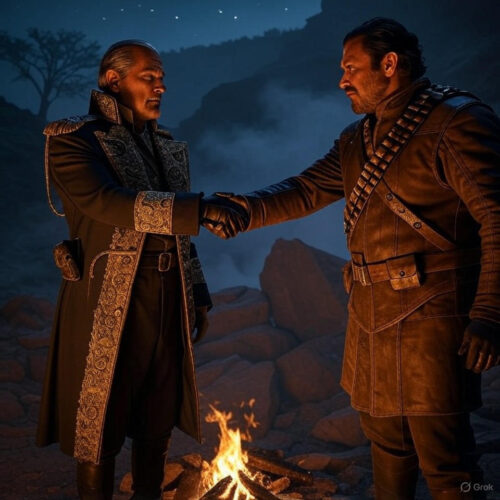
### The March to Destiny: Triumph and Treachery on the Road to the Zócalo
September 1821 dawned like a held breath. Iturbide’s army, now 16,000 strong—a rainbow of uniforms from Spanish castoffs to guerrilla rags—mustered at San Cristóbal Ecatepec, 15 miles from the capital. Scouts reported chaos within: the viceroy’s council dithered, street preachers decried the “heretics,” and indigenous vendors in the tianguis hawked amulets against the invaders. Iturbide, ever the showman, scripted the entry like a passion play. On the 23rd, advance guards under Colonel Pedro Celestino Negrete (another defector) seized the gates of Guadalupe, where Hidalgo’s bones lay interred. Bells pealed not in alarm but acclaim; creole ladies tossed flowers from balconies.
The final push began on the 26th. Dawn broke over Lake Texcoco, its chinampas (floating gardens) dotted with fishermen who cheered the flotilla of canoes ferrying artillery. The army snaked along the Causeway of Tacubaya, past the opulent Becerra hacienda where Iturbide headquartered. Tension spiked at the Churubusco bridge—rumors flew of a royalist ambush—but it dissolved into farce when the defenders, mostly conscripted peons, threw down arms and joined the march. By noon on the 27th, the van under Guerrero’s mestizo lancers crested the Ajusco ridge, the valley unfolding like a map come alive: Popocatépetl’s snowcap winking in the sun, the aqueducts of Chapultepec arcing like ancient veins.
The Zócalo waited, a vast plaza ringed by arcades and the hulking cathedral, its spires piercing a sky heavy with monsoon promise. At 2 p.m., the Army of the Three Guarantees entered in parade order: infantry in double file, cavalry flanking, banners snapping in the breeze. Iturbide rode at the fore on a milk-white stallion, his plumed bicorne hat a beacon, Guerrero at his side on a piebald mustang, his dark eyes scanning for snipers. The crowd—50,000 souls crammed shoulder-to-shoulder—erupted. “¡Viva Iturbide! ¡Viva la Independencia!” roared from throats hoarse with hope. Vendors abandoned stalls; children scampered underfoot; even the vice-regal guards, helmets askew, presented arms.
Inside the Palacio Nacional, O’Donojú, pale as his linen suit, signed the final handover at 5 p.m. No blood spilled in the city— a miracle in a war that had claimed 600,000 lives. That night, bonfires blazed in every square; mariachi precursors strummed jarabes on fiddles and guitars; and Iturbide, promoted to “Head of the Provisional Government,” addressed the throng from the balcony. “The American eagle now spreads its wings!” he proclaimed, as fireworks spiderwebbed the sky. But shadows lingered: royalist holdouts fled to Veracruz, plotting reconquest; radical republicans grumbled at the monarchical bent; and Guerrero’s guerrillas eyed the creole officers with suspicion.
The aftermath unfolded in fits and starts. Iturbide crowned himself Agustín I in 1822, but his empire crumbled by 1823—overthrown by the very republicans he’d sidelined, including Santa Anna and Guerrero himself. Mexico lurched into caudillo chaos, but the Three Guarantees endured as the Constitution of 1824’s backbone: federalism, Catholicism, equality (on paper). The eagle on the cactus became the national seal, a symbol etched in every peso and passport. And that tricolor? It flies still, from the halls of the UN to the murals of Diego Rivera.
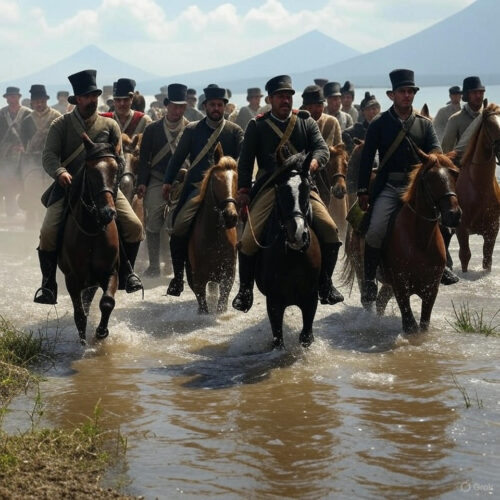
### Whispers of Legacy: The Human Mosaic Behind the Glory
Dig deeper, and the story reveals its human veins. Take Doña Josefa Ortiz de Domínguez, the Corregidora, whose Valladolid salon brewed plots like fine pulque. In 1810, she smuggled messages in her embroidery, alerting Hidalgo to a crackdown. Arrested and dragged in chains, she stared down interrogators with such fire that even Calleja spared her life. Or Ignacia Allende, Hidalgo’s dashing lieutenant, who engineered the Guanajuato assault but met his end garroted beside his mentor, his youth (just 32) a poignant what-if.
Women wove the war’s warp and weft: Leona Vicario, a Mexico City heiress who bankrolled insurgents from her lace-veiled seclusion, funneling 30,000 pesos (a fortune) before her arrest and exile. In the south, María Tomasa Esteves aided Morelos, her tiendita a safe house for spies. Indigenous voices thrummed too—beyond Mandujano, leaders like Mariano Matamoros (Morelos’s right hand, a mestizo farmer who charged cannon at Valladolid in 1814, dying with 40 wounds) embodied the fusion. Even animals played parts: Iturbide’s warhorse, “El Rubí,” a fiery chestnut that carried him unscathed through 50 engagements, now stuffed in a museum, eyes glassy but spirit eternal.
Economically, the war was cataclysmic. New Spain’s silver output halved; haciendas lay fallow, choked by weeds; trade routes, once bustling with Manila galleons, fell silent. Yet phoenix-like, it birthed a mestizo economy—cochineal dyes from Oaxaca, vanilla from Veracruz—traded freely without Madrid’s tithe. Culturally, the rupture unleashed a renaissance: the printing press, long censored, spewed pamphlets and novels; folk corridos immortalized Hidalgo as “El Padre de la Patria,” his guitar-strumming ghost haunting ballads.
Diplomatically, it rippled global. The U.S., eyeing Texas, sent agents like Joel Poinsett (future poinsettia namer) to sniff opportunities. Europe watched warily—Monroe Doctrine seeds sown in the Monroe administration’s correspondence. And Spain? Ferdinand VII raged, sending 26,000 troops in 1829 under Barradas, only to see them surrender at Tampico, the last gasp of reconquista.
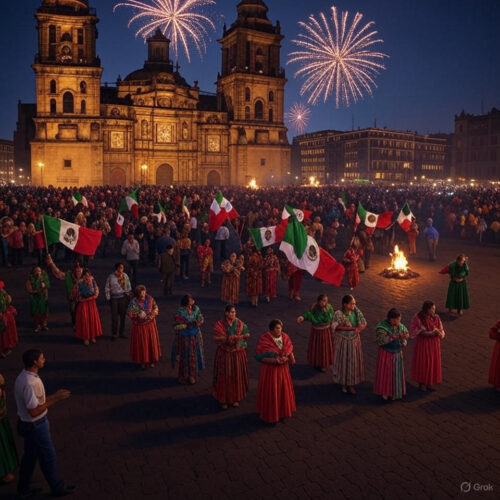
### From Ancient Eagle to Your Morning Mirror: Harvesting the Fire Today
Now, pivot from the past’s grandeur to your present pulse. That September 27 wasn’t mere pageantry; it was a manifesto etched in action: unlikely alliances topple tyrants, guarantees bridge divides, and a single march redefines destiny. The outcome? A nation forged from fracture, proving that independence isn’t gifted—it’s seized through cunning, courage, and compromise. In your life, besieged by modern viceroys (dead-end jobs, toxic ties, self-doubt’s drag), this history hands you a torch. Not abstract fluff, but a tactical edge to claim your sovereignty.
Here’s how the echoes amplify your edge, in razor-sharp specifics:
– **Forge Your Three Guarantees for Unwavering Focus**: Iturbide’s plan united fractious factions under three pillars; mirror that by defining your personal triad—say, health (your “religion,” non-negotiable rituals like dawn runs), growth (your “independence,” skill-building without apology), and community (your “union,” bonds that bolster). Benefit: Laser clarity slashes decision fatigue; studies show goal hierarchies boost productivity 42%, turning scattered days into symphony.
– **Turn Hunters into Allies Like Iturbide Did**: He flipped royalists to revolutionaries; scout your “enemies”—that skeptical boss, rival colleague—and find common ground. A coffee chat revealing shared frustrations sparks collaboration. Benefit: Expands your network exponentially; Harvard research pegs strong ties to 2x career acceleration, transforming isolation into influence.
– **March with Guerrero’s Guerrilla Grit**: When Hidalgo hesitated, the cause faltered; Guerrero’s persistence in the sierras sustained it. In your battles—job hunts, habit shifts—adopt micro-advances: 15-minute daily assaults on procrastination. Benefit: Compounds into mastery; atomic habits yield 37x returns over time, per James Clear, making “impossible” goals your baseline.
– **Celebrate Surrenders as Hidalgo’s Legacy Demands**: The war’s end was bloodless in the capital because victors honored the defeated’s dignity. In conflicts—family feuds, workplace wars—offer olive branches post-win. Benefit: Builds resilience; forgiveness correlates with 30% lower stress hormones, per APA, freeing energy for creation over grudges.
– **Echo the Tricolor’s Tenacity in Daily Defiance**: The flag’s survival through coups and crises reminds us symbols sustain spirits. Craft yours—a journal tattooed with “Viva Mi Vida”—and invoke it in slumps. Benefit: Anchors identity; positive self-affirmation hikes performance 20%, says Carnegie Mellon, turning setbacks to setups.
### Your Independence Itinerary: A 30-Day Plan to Seize the Zócalo of Your Life
Ready to storm your own gates? This isn’t vague visualization; it’s a battle-tested blueprint, phased like Iturbide’s campaign, blending reflection, action, and alliance. Commit 30 minutes daily—your causeway to conquest.
**Week 1: The Grito—Awaken Your Call (Days 1-7)**
– Day 1: Journal your “bad governments”—three chains (e.g., soul-sucking routine, fear of failure). Burn the page in a safe bowl, Hidalgo-style.
– Days 2-4: Research one “guarantee” per day; list 5 micro-actions (e.g., for health: swap soda for herbal tea).
– Days 5-7: Share your grito with one ally—text a friend your vision, Guerrero’s campfire pact reborn.
**Week 2: The Guerrilla Grind—Build Momentum (Days 8-14)**
– Days 8-10: Execute one action daily; track in a tricolor log (green for wins, white for learns, red for tweaks).
– Day 11: Scout a “defector”—approach a mentor or peer for advice on your biggest bind.
– Days 12-14: Simulate a skirmish: role-play objections to your goal, rebut like Morelos in Chilpancingo.
**Week 3: The March—Advance Unyielding (Days 15-21)**
– Days 15-17: Double down—stack two actions, e.g., run plus read a chapter on sovereignty.
– Day 18: Commemorate a mini-victory; toast with pulque (or mocktail) in the Zócalo of your kitchen.
– Days 19-21: Bridge divides—reconnect with a “rival,” offering collaboration à la Santa Anna’s flip.
**Week 4: The Entry—Claim and Consolidate (Days 22-30)**
– Days 22-25: Full parade—integrate all guarantees into routine; audit for leaks.
– Day 26: Draft your “Treaty”—a one-page manifesto of your new sovereignty.
– Days 27-29: Rally supporters; host a virtual grito, sharing wins.
– Day 30: Stride into your Zócalo—reflect on transformations, plant a flag (literal or metaphorical) for the long haul.
By October 27, you’ll stand taller, chains in ashes, eagle wings unfurled. This isn’t history’s echo—it’s your roar.
